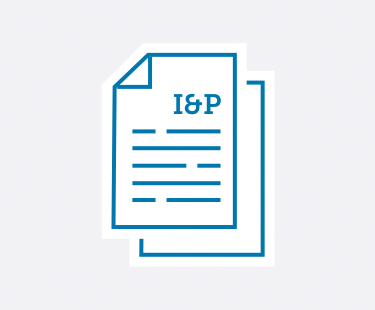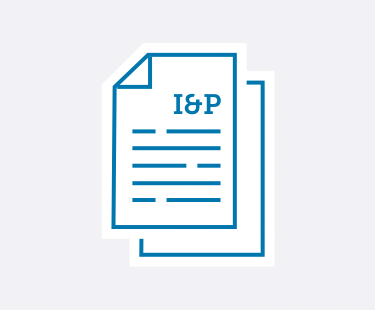

Learn practical strategies to handle emerging trends and leadership challenges in private schools.
No matter if you’re a School Head, Admission Director, Development Director, Board member, or any other private school administrator—Ideas & Perspectives®, ISM’s premier private school publication, has strategic solutions for the pervasive problems you face.
- Tuition not keeping pace with your expenses? In I&P, explore how to use strategic financial planning to create your budget and appropriately adjust your tuition.
- Enrollment dropping off? Discover how to implement the right admission and enrollment management strategies that engage your community—and fill your classrooms.
- Trouble retaining teachers? Learn how you can best support your teachers using ISM’s Comprehensive Faculty Development framework. Your faculty members will become more enthusiastic about their roles—which ultimately improves student outcomes.
- Fundraising campaigns not as successful as you’d hoped? Implement ISM’s practical advice and guidance to build a thriving annual fund, construct an effective capital campaign, and secure major donors—no matter your community size or location.
- Not sure how to provide professional development—for you and your staff? Learn ways to develop and fund a successful professional development strategy. You can improve teacher-centered satisfaction and growth, which in turn strengthens student-centered learning.
- Problematic schedule? You can master the challenges of scheduling with the help of ISM’s practical advice, based on our experience with hundreds of schools and our time-tested theories.
- And so much more.
I&P has shared targeted research, up-to-date insight, and sound theory with school leaders since 1975. More than 8,500 private school decision-makers find the answers to their schools’ administrative and governance matters in our advisory letter. We give you the strategic answers you need.
As an ISM Silver or Gold member, you not only receive issues online and in print 10 times a year, but you have access to 900+ articles in our web archive. Need help? It’s at your fingertips! Learn more and sign up for ISM's membership here.
Search
See the articles from our latest issue of Ideas & Perspectives.
Reinvent Your Whole-Faculty Meetings
Volume 43 No. 8 // June 25, 2018
Whole-faculty meetings—the phrase alone makes eyes glaze over. Administrators often view these sessions as a necessary evil. Teachers routinely consider them one of the least productive uses of their time.
1. Already a member? Click here to login.
2. Not a member? Click here to become a member.
3. Not sure? We'll help you figure it out.
How to Provide Predictability and Support to the Division Head
Volume 43 No. 8 // June 25, 2018
Predictable and supportive environments are the bedrock on which all great schools are built. We have observed schools suffering from poor leadership and precarious finances—but the culture often keeps a school going steady. Schools that once had strong financial stability began to erode when the predictable and supportive culture was overtaken by toxic elements.
1. Already a member? Click here to login.
2. Not a member? Click here to become a member.
3. Not sure? We'll help you figure it out.
The New Board President
Volume 43 No. 7 // June 4, 2018
You, as newly elected Board of Trustees President, may assume that leadership of private-independent-school Trustees is similar to leadership in other organizational settings. There are indeed similarities with some other kinds of leadership roles, including these. A President brings her or his own “management style” to the post. This tone-setting role is present to some degree in any organization, depending on its exact purpose(s) and structure. A President selects and appoints those who will exercise second-level management and leadership within the Board. Any organization larger than, say, a half-dozen individuals, needs this kind of action from the designated leader. A private-independent school Board of Trustees President can sometimes strongly influence the direction of the larger organization—the school itself—from a strategic perspective. This is analogous to other governing body leadership contexts, both in for-profit and nonprofit settings.
1. Already a member? Click here to login.
2. Not a member? Click here to become a member.
3. Not sure? We'll help you figure it out.
Should You Re-enroll Students Whose Parents Owe Tuition?
Volume 43 No. 7 // June 4, 2018
Private-independent schools often face the sensitive issue of whether to re-enroll a current student whose parents owe tuition. A school wants to maintain its primary focus on the best interests of the student. Yet, the school simultaneously has a broader fiduciary responsibility to all the school’s families to fund and sustain mission excellence over time.
1. Already a member? Click here to login.
2. Not a member? Click here to become a member.
3. Not sure? We'll help you figure it out.
Attracting and Retaining the Best Faculty
Volume 43 No. 7 // June 4, 2018
Every independent school must hire, develop, and retain the best faculty to deliver upon its mission and the Portrait of the Graduate. You need qualified teachers who are committed to your mission, can connect with your students, and contribute positively to the faculty culture. You hold tight to those pied piper teachers that embody the school’s Characteristics of Professional Excellence. How do you attract and retain such teachers?
1. Already a member? Click here to login.
2. Not a member? Click here to become a member.
3. Not sure? We'll help you figure it out.
Admission Practices With Siblings
Volume 43 No. 7 // June 4, 2018
Your current students’ brothers and sisters can make ideal additions to your student body. Their families are mission-appropriate and already committed to your school. When parents enroll another child, they are making an obvious and powerful endorsement of your school.
1. Already a member? Click here to login.
2. Not a member? Click here to become a member.
3. Not sure? We'll help you figure it out.
Maintain a Complete and Accurate Head’s File
Volume 43 No. 6 // May 15, 2018
With any employer-employee relationship, your school must maintain paper and electronic files. Just as your school should have a policy on what is contained in an employee’s file and who will keep it, your Board must do the same for its sole employee—the School Head. Basic documents on payroll and benefits should be kept by the Business Office. However, the Head’s contracts, evaluations, and supporting documents (and other employment-related correspondence) should not be accessible to anyone in the school. Only the Board should see this confidential information. (Access to health records should be limited even further—perhaps only to the Board President.)
1. Already a member? Click here to login.
2. Not a member? Click here to become a member.
3. Not sure? We'll help you figure it out.
Enhance the Effectiveness of Your Financial Aid Committee
Volume 43 No. 6 // May 15, 2018
The Financial Aid Committee plays an integral role in your school’s strategic enrollment management operation. Taking a best practices approach ensures your financial aid decision-making strengthens (rather than undermines) your school’s fiscal position—and your ability to sustain mission excellence over time. When managed strategically, your financial aid process and decisions enhance the mission experience of every student enrolled at your school.
1. Already a member? Click here to login.
2. Not a member? Click here to become a member.
3. Not sure? We'll help you figure it out.
The ISM X: The Fifth Iteration of the Stability Markers
Volume 43 No. 6 // May 15, 2018
The fifth iteration of the ISM Stability Markers® has generated small—but necessary—alterations in the graphic representation (shown below), the ISM X™. These alterations center around changes in the scoring of the Strategic Board Assessment, which has become the Strategic Board Assessment II,2 the outcome of a two-year ISM study. This 15-item (Board self-scored) instrument, previously comprising four six-point Stability Markers (Letters A, B, C, and D) in the fourth iteration, has been transformed into a single 24-point Stability Marker in the fifth.
1. Already a member? Click here to login.
2. Not a member? Click here to become a member.
3. Not sure? We'll help you figure it out.
Create a Rich Inbound Marketing Strategy to Increase Website Traffic and Inquiries
Volume 43 No. 6 // May 15, 2018
Standing out in the “virtual” crowd is becoming more difficult as families are overloaded with in-your-face marketing tactics and spam. Therefore, it’s important to create content that not only attracts mission-appropriate families, but also converts them into qualified leads.
1. Already a member? Click here to login.
2. Not a member? Click here to become a member.
3. Not sure? We'll help you figure it out.


